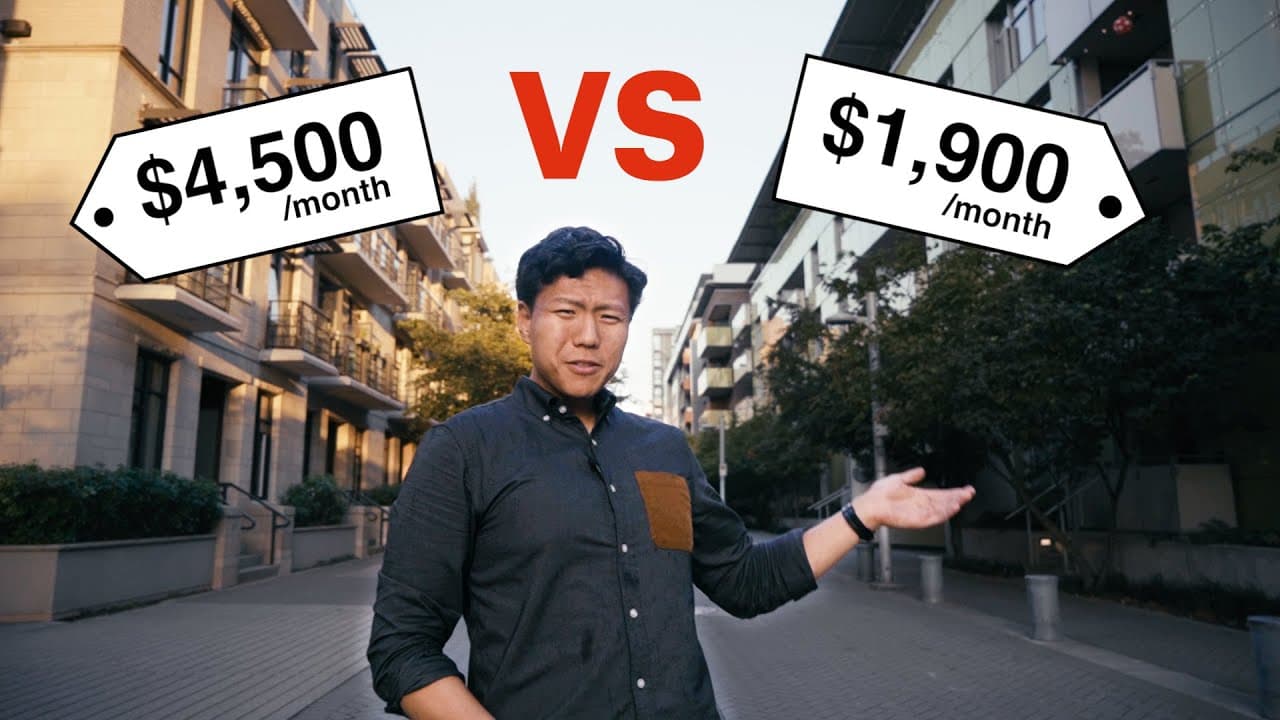🏠Context and Publisher
The video "The Non-capitalist Solution to the Housing Crisis" is produced by the YouTube channel "About Here," which focuses on social issues and sustainable solutions. The channel discusses innovative approaches to various societal challenges, including housing. The video addresses the housing crisis in the context of Vancouver, Canada, and explores non-market housing as a viable alternative to traditional market-driven solutions.
📹Video Overview
The video opens by highlighting the expensive rental prices in Olympic Village, Vancouver, where two-bedroom apartments range from $1,900 to $5,000 per month. It contrasts these market rates with the affordable rents offered by the Athlete's Village housing cooperative, which are set to cover only operating costs rather than generating profit. This non-profit model exemplifies non-market housing, where rents are determined by the actual costs of providing housing.
💡Non-Market Housing Explained
Non-market housing exists because various organizations recognize housing as a basic need and aim to provide it without profit motives. Examples include non-profit organizations, churches, and government agencies that manage and offer affordable housing. While cutting out profit can lower rents, the initial costs of building and operating such housing can still be significant. Some non-market projects receive subsidies to enhance affordability, while others, without major subsidies, may have rents comparable to market rates.
🌍The Potential of Non-Market Housing
The video presents the concept of building a substantial amount of non-market housing to stabilize the overall housing market. In Vienna, for instance, 60% of the population resides in non-market housing, which helps to keep private sector rents from escalating. This concept emphasizes that an abundance of non-market housing can mitigate rent inflation and improve affordability for a broader population.
🔑Challenges and Solutions
Despite its benefits, non-market housing faces challenges, including long waiting lists and accessibility issues. The video suggests that increasing the supply of non-market housing could alleviate these concerns, proposing a model where numerous units are built to ensure availability.
🏗️Funding and Construction
Building non-market housing often requires significant investment and funding, which can come from loans, grants, and public land. The video discusses the complexities of financing non-market housing and the role of organizations like Vancity Credit Union in supporting such developments through funding and resources.
📉Market Dynamics
The video also highlights the shortcomings of the private housing market, where high demand leads to increased rents and housing scarcity. It critiques the assumption that the private sector can independently meet housing needs, emphasizing the need for government intervention and support for non-market housing initiatives.
🌱Conclusion
The discussion concludes that while non-market housing is not a complete solution to the housing crisis, it plays a critical role in stabilizing the market and ensuring affordable options are available. By combining efforts to increase non-market housing with broader reforms in the housing sector, communities can work toward sustainable housing solutions that prioritize people over profits.
